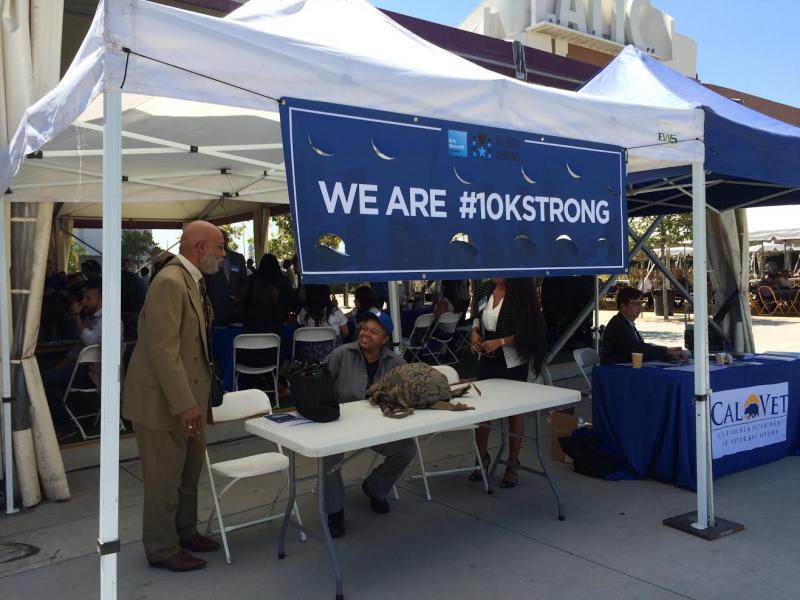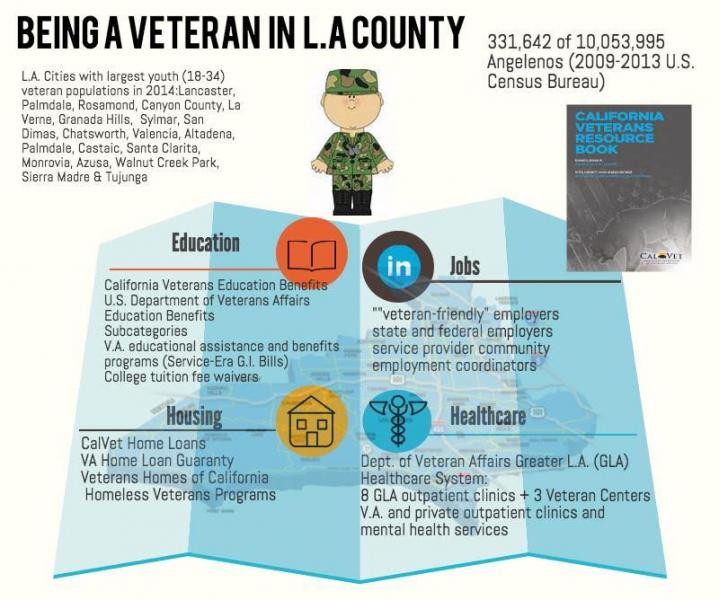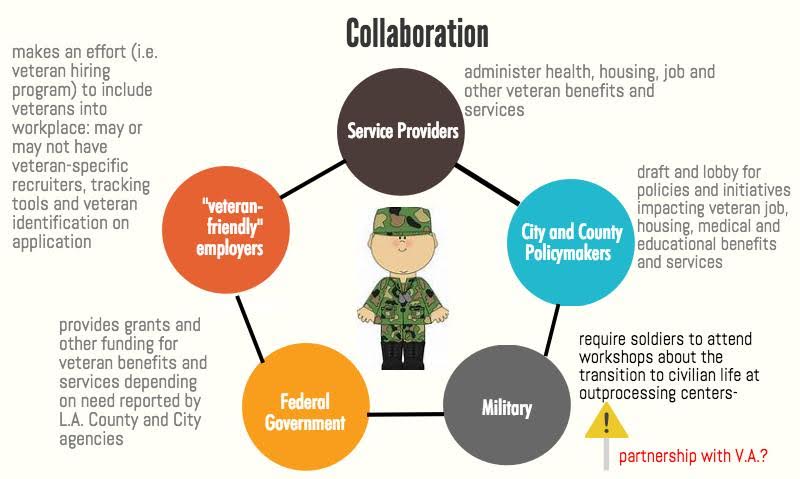It’s About Human Support: Defining The 10,000 Strong Initiative In L.A.

Because King doesn’t want his children to “see [him] like this,” he has kept his homelessness a secret from them for a decade. He and some of the 2,733 other at-risk veterans in Los Angeles—the national capital of veteran homelessness—often collaborate for resources and recognition, walking miles to secure benefits promised by the U.S. Department of Veteran Affairs and receiving indefinite “I’ll call you back” promises from employers.
READ MORE: This Veterans Day, Let’s Stop Screwing Over Veterans
King, along with fourteen attending veterans, voiced his frustrations with disability discrimination, transitional housing vouchers and medical services last week at the first workshop of the 10,000 Strong Veterans’ Career Summit. The Summit, hosted by L.A. Mayor Eric Garcetti and affiliated organizations, offered career guidance for local veterans. Garcetti has pledged to hire 10,000 local veterans by 2017.
A veteran and Goodwill case manager speaks with Mayor Garcetti on how the Summit helped her and fellow veterans achieve employment and recognition.
While promoted as a career fair, the Summit raised awareness that veteran employment is highly dependent on the health care, education and housing needs of homecoming veterans. These four needs facilitate a veteran’s transition from military to civilian life, especially in adapting to L.A’s rising living costs and diminishing employment bases.
Although both services helping veterans get job-ready and employers presenting jobs tabled at the Summit Career Fair, their division into separate tents represented a job field resting on an extensive and complex network of veteran services. It also revealed a gap in communication between veteran service providers and employers in providing supportive services to veteran employees and applicants.

READ MORE: When Veterans Serve... Behind Bars
Of the hundreds of booths skirting the Los Angeles Trade Technical College campus during the fair, service providers outnumbered employers in representation. Service providers, such as hospitals, provide employment services like resume assistance and job referrals. Only three mental healthcare service providers were in attendance: REBOOT, The Soldier’s Project and West L.A. VA Mental Health.
“I don’t feel like there are actual employers [at the Summit],” said John Tyler, a community employment coordinator for the Long Beach V.A. Health Care System. “More service providers with employment services. That’s what discourages veterans from coming to events like this.”
After becoming homeless following his discharge from the U.S. Army in 2006, Tyler secured positions at Rite Aid and 7/11 after a year of relentlessly submitting resumes at local stores. While Tyler identifies a bevy of barriers to a veteran’s employment – lack of education, pride, miscommunication of military skills on resumes, health care needs, homelessness, legal needs and limited knowledge of resources among them – he says that through collaboration between several stakeholders, improvement is possible. Monthly L.A. and Orange County Veteran Collaborative meetings, where many agencies and organizations come together to solve issues plaguing veterans, are one example of collaboration at work.
READ MORE: Vets Helping Vets On Art Walk
However, collaboration on veteran initiatives does not imply prioritization. Collaboration between service providers and employers can be limited by funding and employer incentive to learn about veterans’ military experiences and needs. The latter can be a major concern for veteran job applicants and employees, given that approximately 30% of 21.8 million American veterans suffer from Post Traumatic Stress Disorder and other service-connected physical and mental health disabilities.
Andrea Schmidt, director of development for The Soldier’s Project, a nonprofit, free mental health counseling service, said, “Ideally, we want do more training with employers to teach them how traumatic brain injuries impact the interview process and how to work with people with injuries. Right now, we are small and have veterans calling in for immediate help.”

Some employers, however, make an effort to learn about and include veterans in their workforce. The Cheesecake Factory, Starbucks, the L.A. Metro, the State of California Dept. of Alcoholic Beverage Control and Lockheed Martin were among the 94 companies tabling at the Summit as “veteran-friendly employers.” Many have a veteran hiring program with or without veteran-specific recruiters, while others have government contracts specifying a quota with eligibility requirements for hiring veterans. Tyler adds that “data tracking tools, veteran-specific recruiters, and check boxes for veteran identification on the application are signs that a company is veteran friendly.”
“Collaboration in military initiatives means ways employers can connect with veterans,” said Jason Lau, an L.A.-based Starbucks recruiter. “It can come in many forms, such career fairs or individual community events. Frankly, we need to selective on who we work with since there are so many companies supporting veterans.” Starbucks established a veteran hiring employer network, the Armed Forces Network, in 2007. Since then, it has expanded AFN chapters nationwide by partnering with veteran families and employers, establishing “military family stores” and pledging to hire 10,000 veterans and military spouses by 2018.
To become “veteran-friendly,” companies must be aware of the characteristics of a local veteran population, which vary in unemployment, disability and labor force participation levels due to factors like their service era, age, gender, race and education. With the aid of a service provider in identifying a local veteran employment base, employers can better communicate to a veteran how his or her skills and needs will be addressed in their workplace.
“10,000 Strong isn’t about workforce support. It’s a human effort,” said Mayor Eric Garcetti, a U.S. Army veteran, as he announced the hiring of 5,000 veterans by 200 public and private 10K Coalition members from 2014-15 at the Summit press conference. Humanizing veteran needs is a crucial first-step in collaboration between stakeholders of veteran employment. A “human” effort is a helping hand offered in many forms, from helping a veteran get to a veteran resource center to speaking for veteran needs at City Hall.
While King only represents a small fraction of the 1,893,539 veterans residing in L.A. County, his concerns represent those of a growing population of homecoming veterans resuming their personal and professional lives in L.A. While L.A. City and County rests on a large cushion of federal aid, partnerships and automated services for veteran benefits and services, the Summit called for sponsors to reevaluate their commitments based on the changing demographics of local veteran populations.
Contact Staff Reporter Mahima Verma here.



